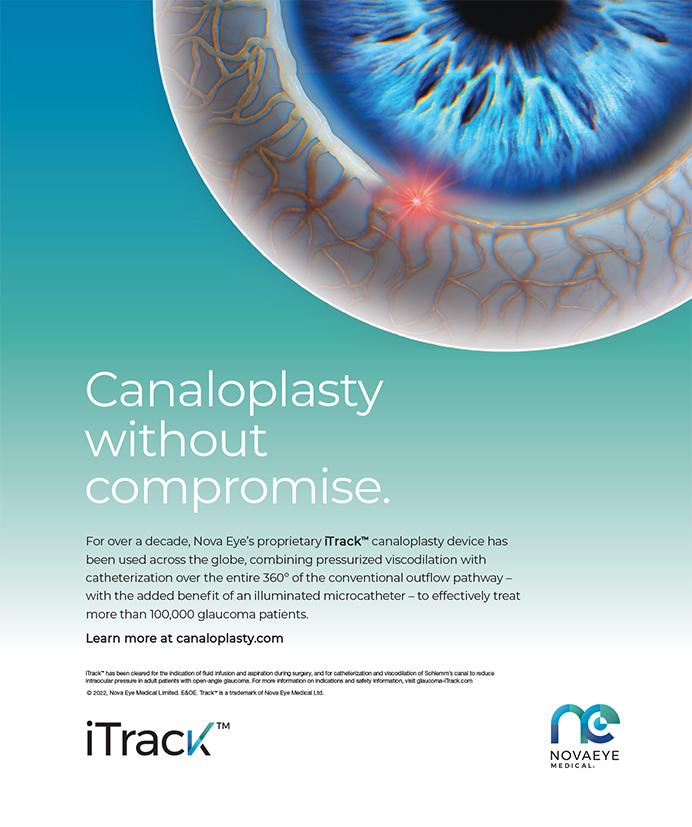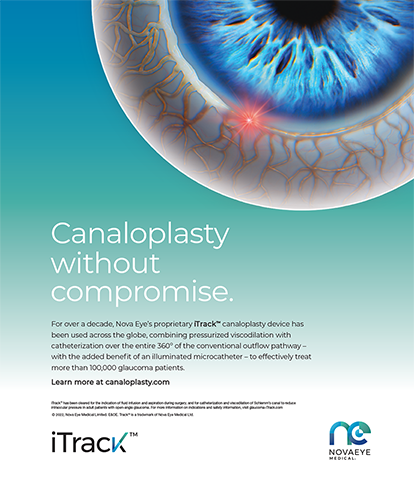Innovations tend to be unexpected. Our willingness to assess new developments and ideas has enabled us to improve our surgery and enhance the benefits for our patients.
EXAMPLE NO. 1: TECHNIQUE FOR SAVING AN ERRANT CAPSULORHEXIS
Several years ago, at a meeting of the European Society of Cataract and Refractive Surgeons, we volunteered to help teach a wet lab about the complications of phacoemulsification. The lead instructor, Brian Little, MA, DO, FRCS, FRCOphth, briefly described a technique for saving the errant capsulorhexis and showed some gorgeous videos with high-magnification views of popping zonular fibers. The method involved a counter-intuitive maneuver that essentially pulled the flap in precisely the wrong direction. Nevertheless, the capsule consistently behaved itself beautifully, and the capsulorhexis was saved. The impression Brian gave the attendees was that he had learned this technique from a much more important, and probably a lot more famous, cataract surgeon than himself. We thought that he had probably learned it from a well-established textbook.
During the wet lab, Brian said, "I promise you this will work every time." Trying the procedure for ourselves on pig eyes seemed to support his argument, but we hesitated to wholeheartedly adopt the technique. As with anything new, we tried to look objectively at its potential benefit to our patients instead of focusing on our own anxiety. After repeated successes with Brian's technique, we knew it was a winner.
During a later, casual conversation with Brian, we were shocked to discover that he had developed the technique himself but had yet to publish it. "Too busy to write it up," Brian said (Figure 1).1
A couple of years later, while we were giving Grand Rounds at a well-known university in the western United States, Brian's technique came up again. One of the faculty members, a cataract surgeon, interrupted the lecture to explain that the maneuver actually involved grasping the torn edge of the capsular flap as close to the point of its origin as possible and pulling in the direction one wanted it to go. We stopped and emphasized, with lots of hand waving, that the pulling was in fact in the direction opposite to that in which one intended to go. There was an awkward pause. Although we were not sure if we had gotten the message across, but there were no further comments, and the lecture resumed.
Brian's technique takes some getting used to, because it generally differs from what we ophthalmologists were initially taught.
EXAMPLE NO. 2: CORTICAL CLEAVING HYDRODISSECTION
Another improvement that requires a moment's reflection is cortical cleaving hydrodissection (it is not cortical "cleavage").2 Usually, cortical cleaving hydrodissection actually permits the aspiration of most of the cortex (if not the entire cortex) during the process of removing the epinucleus. How does one accomplish this? The key is to decompress the capsular bag and rotate the lens after the wave of fluid passes. An injection of balanced salt solution under the rim of the capsule causes the lens to bulge forward as fluid is trapped behind the lens within the bag. Pushing posteriorly on the lens will force the trapped fluid forward around the lens, thereby lysing the connection of the capsule to the cortex. Rotating the lens will strip away any bridging cortical tendrils. Loosened, the cortex washes into the phaco tip with the epinucleus. The surgeon can usually tease away any remaining strands upon removing the viscoelastic after inserting an IOL, thus avoiding I/A as a separate step in the procedure.
As the motivational author and speaker Wayne Dyer, PhD, says, "You'll see it when you believe it."3 A conceptual understanding of cortical cleaving hydrodissection and a high level of confidence in that understanding (ie, believing it) precedes surgeons' successful application of the technique (ie, seeing it). If the procedure occurs by accident in the OR one day, surgeons will not be able to consistently and repeatedly perform the technique without understanding what their fingers need to do. (Who can doubt the primacy of mind over matter upon considering the incredible achievements built on the foundations laid years ago by Sir Harold Ridley and Charles Kelman, MD?)
LIFE'S LESSONS
The best lessons in life come from experience—not from books, videotapes, or journals. What makes experiential education so valuable is that we do not forget what we have learned. In similar subsequent situations, we will remember that heart-stopping moment in the OR when we thought we lost the capsulorhexis but Brian's maneuver brought it back. For this reason, cataract surgery ultimately must be taught and learned in the OR, where a patient's sight is on the line. Only that intensity focuses a surgeon's desire, skill, and experience to bring about a happy ending.
In his best-selling 1961 book Stranger in a Strange Land, the science fiction author Robert Heinlein coined a term for the kind of understanding we surgeons strive to achieve in teaching and learning: to grok. In Heinlein's view of quantum theory, grokking is the intermingling of intelligence that necessarily affects both the observer and the observed. Do readers grok cortical cleaving hydrodissection? They will not achieve it until they do, and we do not think anyone can grok the concept with a closed mind.
I. Howard Fine, MD, is a clinical professor of ophthalmology at Oregon Health & Science University, and he is in private practice with Drs. Fine, Hoffman & Packer, LLC, in Eugene, Oregon. Dr. Fine may be reached at (541) 687-2110; hfine@finemd.com.
Mark Packer, MD, is a clinical associate professor of ophthalmology at the Casey Eye Institute, Oregon Health & Science University, and he is in private practice at Drs. Fine, Hoffman, & Packer in Eugene, Oregon. Dr. Packer may be reached at (541) 687-2110; mpacker@finemd.com.
- Little BC, Smith JH, Packer M. Little capsulorhexis tear-out rescue. J Cataract Refract Surg. 2006;32:1420-1422.
- Fine IH. Cortical cleaving hydrodissection. J Cataract Refract Surg. 1992;18(5):508-512.
- Dyer W. You'll See It When You Believe It. New York, NY: W. Morrow; 1989.


